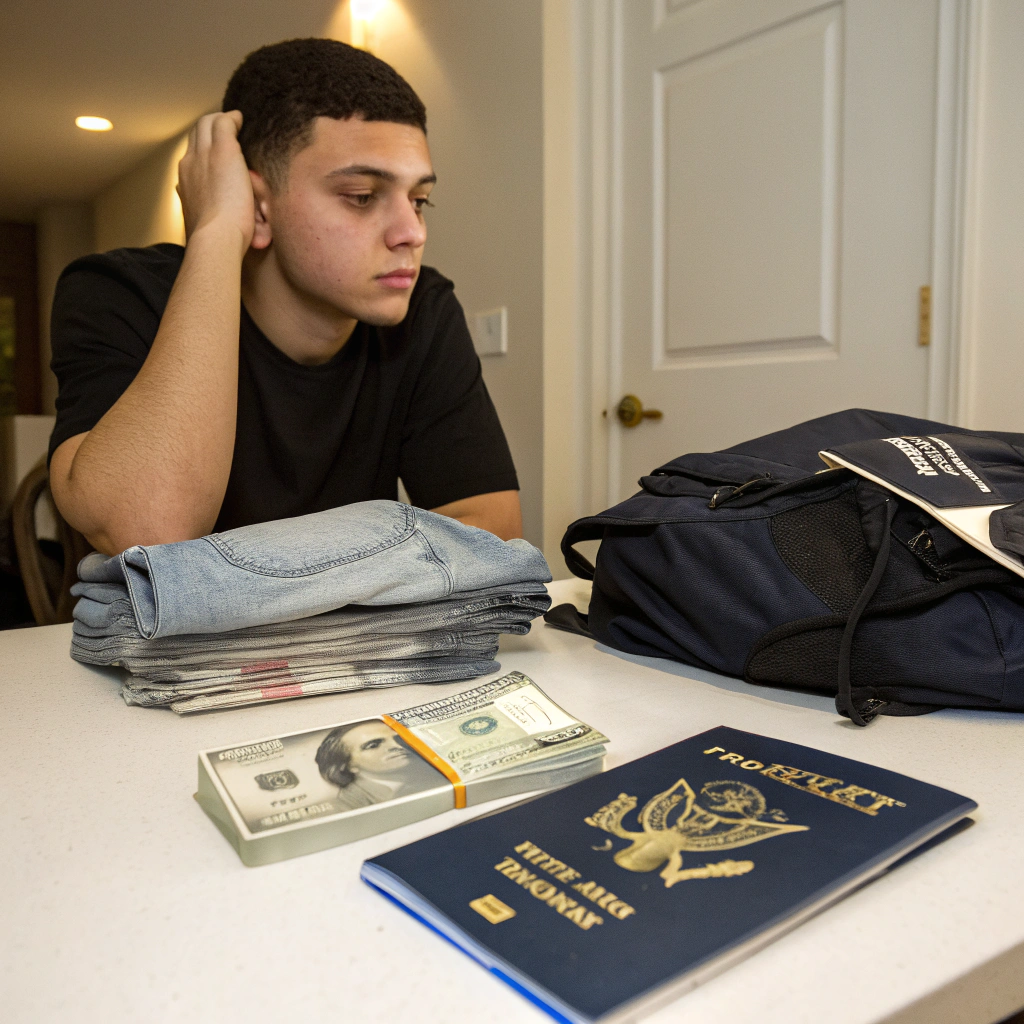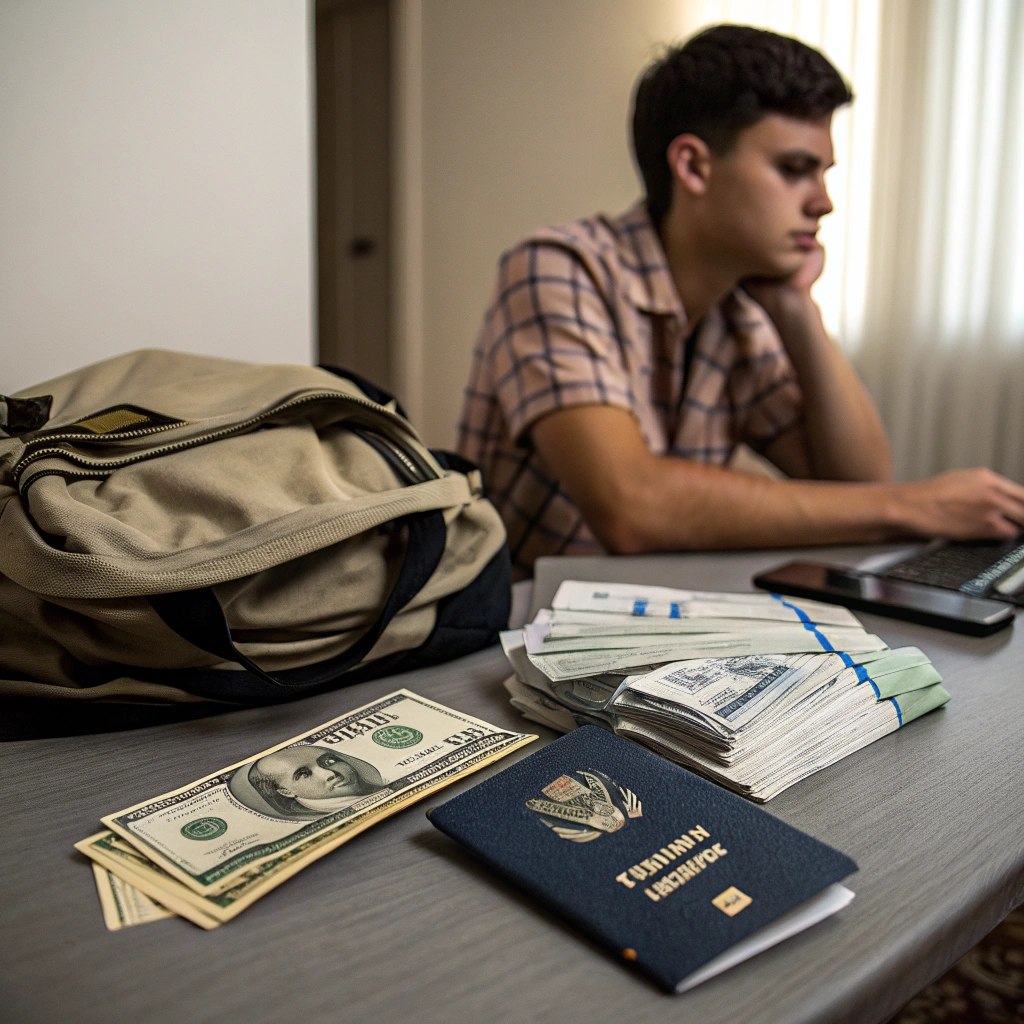By A Savvy Traveler

On This Page
- Mastering Daily Expenses
- Prioritizing Budget-Friendly Destinations
- Key Strategies for Maximizing Your Travel Fund
The dream of a year-long global adventure often conjures images of endless exploration and exotic locales. For many, however, the financial reality can seem daunting. While the average solo traveler might budget significantly more, undertaking a full year of world travel on a $20,000 budget is, remarkably, within reach. This ambitious goal translates to approximately $50-$55 per day, demanding a lean approach and strategic decisions at every turn. It’s crucial to acknowledge that this figure places you firmly at the lower end of the spectrum, especially in a post-pandemic world where travel costs have seen notable increases. More comfortable solo travel budgets typically range from $25,000 to $32,000 for a similar duration, allowing for more flexibility and creature comforts. With a $20,000 ceiling, realistic expectations should include exploring one to three continents and visiting 10-15 countries, with a heavy emphasis on regions renowned for their affordability. This isn’t about luxury; it’s about the pure essence of discovery, proving that extensive travel doesn’t always require an exorbitant bank account.
Mastering Daily Expenses: Accommodation, Food, and Transportation
Achieving a year on $20,000 hinges on rigorously controlling daily expenditures, with accommodation, food, and transportation being the primary battlegrounds for budget-conscious explorers.
Accommodation: Your Home Away From Home (On a Budget)
Accommodation invariably represents the largest chunk of a traveler’s budget. To minimize this, a diverse array of budget-friendly options becomes your arsenal. Hostels are a staple, offering dormitory beds and a social atmosphere at a fraction of hotel costs. Guesthouses, particularly in Southeast Asia and parts of Latin America, provide private rooms that are often surprisingly affordable. For longer stays, Airbnbs can become economical, especially if you leverage monthly discounts or opt for rooms in shared apartments. Another powerful strategy is work exchange programs (e.g., Worldpackers, Workaway), where you trade a few hours of work per day for free lodging and sometimes even meals. Perhaps the most effective way to secure free accommodation, particularly in pricier destinations, is through house-sitting platforms like TrustedHousesitters. By caring for pets and homes, you can enjoy comfortable, rent-free stays in locations that would otherwise be out of reach.
Food: Savoring Local Flavors Economically
Eating well without breaking the bank is an art. The golden rule is to embrace local culture through street food and local eateries. These establishments offer authentic, delicious, and incredibly cheap meals that often outperform their upscale counterparts. Cooking your own meals is another significant money-saver. By purchasing groceries from local markets – a cultural experience in itself – you can prepare simple, nutritious meals, drastically reducing your daily food expenses. Avoid tourist-trap restaurants with inflated prices and always seek out where the locals eat.
Transportation: Navigating the Globe Smartly
International flights are often the single largest upfront expense. Strategic booking is paramount: be flexible with your travel dates, utilize flight comparison websites, and consider flying into smaller, cheaper entry points before taking local transport to your desired destination. Round-the-world (RTW) tickets, while a significant investment ($2,500-$3,500), can offer a structured and potentially cost-effective way to cover multiple continents if your itinerary is fixed. Once on the ground, intercity and intercountry travel should prioritize overland options such as buses and trains. These modes of transport are not only cheaper but also offer a more immersive way to experience the landscape and local life. Within cities, public transportation, walking, or biking are your most economical choices, allowing you to save on taxis and ride-shares while getting a feel for your surroundings.
Related Travel Ideas
Underrated Cities That Stretch Your Travel Dollar Further
We Skipped the Tourist Traps in Portugal, and What Happened Surprised Us
🏔️ 10 Cool Mountain Villages in Europe Americans Never Visit
Explore the best beaches in Egypt in the summer of 2025

Prioritizing Budget-Friendly Destinations
The success of a year-long trip on $20,000 hinges almost entirely on where you choose to spend your time. Focusing on countries with a genuinely low cost of living is non-negotiable.
Southeast Asia: The Perennial Backpacker’s Paradise
This region remains a cornerstone for budget travelers. Countries like Vietnam ($15-$30/day), Laos ($20-$35/day), and Cambodia offer incredibly low daily costs for food, accommodation, and activities. Indonesia (Bali, for example, can be managed from $600/month for basic living), the Philippines ($700-$1,000/month), and Thailand ($25-$50/day) continue to draw travelers with their vibrant cultures and affordability. The extensive backpacker infrastructure here also means plentiful budget-friendly options.
South and Central America: Rich Culture, Low Cost
Further afield, the diverse landscapes and cultures of South and Central America present another fantastic option. Countries such as Mexico, Colombia, Peru, and Ecuador are generally very affordable, with daily costs often hovering around $35-$40. From ancient ruins to bustling cities, the experiences here are rich without being taxing on your wallet.
Indian Subcontinent: Deep Immersion at Minimal Expense
For an unparalleled cultural immersion at an incredibly low cost, the Indian Subcontinent stands out. India, in particular, offers a remarkable daily spend, with monthly living costs in most cities ranging from $300-$500. This region requires an adventurous spirit but rewards with unforgettable experiences.
Eastern Europe: Europe’s Hidden Gems
While Western Europe is notoriously expensive, its Eastern counterparts offer a more budget-friendly European experience. Bulgaria, Romania, and Serbia provide captivating history and vibrant cultures. Bulgaria, for instance, allows for rentals in Sofia for as little as $300-$500/month, making it an excellent base. Even Greece, while more popular, offers surprisingly affordable options outside of its most famous islands.
Africa and Middle East: Unexpectedly Accessible
Beyond the usual suspects, countries like Egypt ($400-$600/month for a comfortable stay) and Morocco in North Africa and the Middle East are surprisingly low-cost. They offer distinct cultural experiences, ancient wonders, and diverse landscapes without the hefty price tag associated with other regions.
Conversely, significant time in expensive regions like Western Europe, Japan, Australia, New Zealand, Canada, and the United States should be strictly limited, if not entirely avoided. Daily costs in these areas can easily skyrocket to $100-$125, quickly eroding your carefully managed $50 a day budget.
Key Strategies for Maximizing Your Travel Fund
Beyond choosing the right destinations and managing daily expenses, several overarching strategies are crucial for stretching your $20,000 budget over an entire year.
Embrace Slow Travel
One of the most effective ways to make your money last is to adopt a philosophy of slow travel. Instead of constantly moving between locations, settle into each destination for weeks or even months. This significantly reduces inter-country transportation costs, which are often substantial. Furthermore, staying longer in one place often opens up opportunities for long-term accommodation discounts, sometimes bringing monthly costs down to $1,000 or even less. Slow travel also allows for deeper immersion into local culture and rhythm, making for a richer experience.
Smart Flight Booking
Flights will likely be your biggest one-time expense. Be diligent in your search: leverage credit card points for free or discounted flights if you have them, book flights well in advance (3-6 months out is often ideal), and remain flexible with your travel dates and even departure/arrival airports. Mid-week flights or those during the shoulder season are typically cheaper. Always compare prices across multiple platforms before committing.
Embrace Local and Free Experiences
Many of the most memorable travel experiences cost nothing. Prioritize free attractions such as local parks, vibrant markets, hiking trails, and self-guided walking tours. Take advantage of outdoor activities and seek out community events. While city passes can offer discounted access to multiple attractions, always weigh their cost against your actual interest in visiting the included sites.
Diligent Financial Management
Your banking choices can impact your budget. Utilize debit and credit cards that offer fee-free international transactions to avoid unnecessary charges. Always withdraw maximum amounts from ATMs to minimize per-transaction fees, and avoid cash advances from credit cards, which incur high interest rates immediately. Most importantly, diligently track your daily spending. Apps and spreadsheets can help you monitor where your money is going and ensure you stay within your $50-$55 daily limit.
Travel Insurance: A Non-Negotiable Investment
While it’s an upfront cost, comprehensive travel insurance is absolutely essential. Unexpected events such as medical emergencies, lost luggage, or trip cancellations can incur significant financial risks that would derail your entire budget. It’s an investment in peace of mind and financial security.
Packing light pairs perfectly with booking smart. When you’re traveling with just one bag, you’re more mobile—you can stay in boutique hotels, tiny guesthouses, or eco-lodges that don’t even have elevators.
That’s why I often use Booking.com. The platform makes it easy to find unique stays, filter by reviews, and even check if there’s laundry service (so you can reuse your 5-4-3-2-1 wardrobe). It’s not just about the clothes—it’s about making travel effortless from start to finish.
Account for Pre-Trip and Additional Costs
Remember to factor in pre-trip expenses like vaccinations, visas for various countries, and essential gear (backpack, clothing, etc.). Once on the road, smaller, often overlooked costs accumulate, such as local SIM cards for connectivity, laundry services, and occasional treats. Budgeting a small buffer for these incidentals is wise.
Travel Off-Season
Visiting destinations during their shoulder or off-peak seasons yields significant savings across the board. Flights, accommodation, and even tour prices are often considerably lower when the crowds have thinned. While weather might be less predictable, the financial benefits and more authentic experiences often outweigh this trade-off.
Flexibility and Spontaneity
While meticulous planning is the backbone of a budget trip, maintaining a degree of flexibility and spontaneity can enhance both your experience and your financial savings. Being open to last-minute deals, alternative plans, or unique opportunities that arise can lead to incredible adventures that weren’t in your original itinerary, sometimes even at a lower cost. A rigid plan can prevent you from capitalizing on these unexpected boons.
Tell us if you have visited this place before.
Kindly, M.A.ZEnjoy
Здесь представлена актуальная и полезная данные по разнообразным направлениям.
Пользователи могут открыть подсказки на актуальные проблемы.
Материалы размещаются постоянно, чтобы вы каждый могли получать свежую подборку.
Интуитивная организация сайта облегчает быстро найти нужные разделы.
порно гей
Большое количество тем делает ресурс интересным для всех читателей.
Любой сможет найти сведения, которые подходят именно ему.
Существование практических советов делает сайт ещё более ценным.
Таким образом, данный сайт — это удобный помощник актуальной информации для широкого круга пользователей.